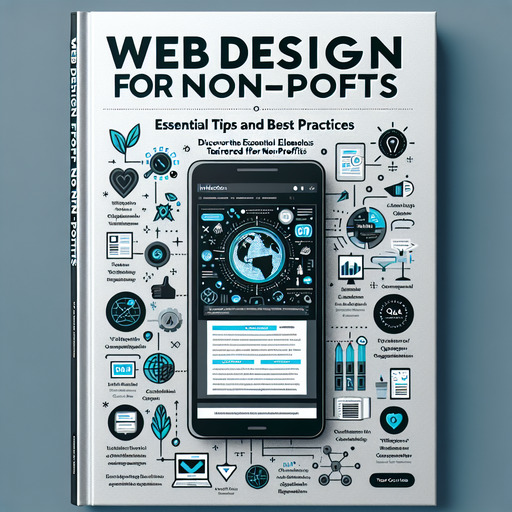
-
Table of Contents
Discover the essential elements of web design tailored for non-profits and elevate your organization’s online presence. Learn more here.
Introduction
Web Design for Non-Profits: Key Considerations
Creating an effective web presence is crucial for non-profit organizations aiming to amplify their mission, engage supporters, and drive donations. Web design for non-profits involves unique considerations that differ from commercial enterprises. Key factors include ensuring accessibility for diverse audiences, crafting compelling storytelling elements, integrating seamless donation functionalities, and optimizing for mobile devices. Additionally, non-profits must prioritize user-friendly navigation, clear calls to action, and robust security measures to protect donor information. By focusing on these critical aspects, non-profits can build impactful websites that not only inform and inspire but also foster a strong, supportive community.
Key Considerations for Web Design for Non-Profits: Essential Tips and Best Practices
When designing a website for a non-profit organization, several key considerations must be taken into account to ensure the site effectively communicates the mission, engages visitors, and drives action. One of the primary objectives is to create a user-friendly experience. This begins with a clean, intuitive layout that allows visitors to easily navigate the site and find the information they need. A cluttered or confusing design can deter potential supporters, so simplicity and clarity should be prioritized.
In addition to a user-friendly layout, the website must be mobile-responsive. With a significant portion of web traffic coming from mobile devices, it is crucial that the site functions seamlessly across various screen sizes. This not only improves the user experience but also enhances the site’s search engine ranking, making it more accessible to a broader audience.
Another essential consideration is the visual appeal of the website. High-quality images and videos can significantly impact how visitors perceive the organization. These visual elements should be relevant and compelling, effectively conveying the non-profit’s mission and the impact of its work. Consistent branding, including the use of the organization’s logo, colors, and fonts, helps to create a cohesive and professional appearance.
Content is another critical component of a non-profit website. The messaging should be clear, concise, and emotionally engaging. Storytelling can be a powerful tool in this regard, as it helps to humanize the cause and connect with visitors on a personal level. Additionally, the website should include detailed information about the organization’s mission, history, programs, and achievements. This transparency builds trust and credibility, which are essential for garnering support.
To further engage visitors, the website should feature strong calls to action (CTAs). These CTAs should be strategically placed throughout the site, encouraging visitors to donate, volunteer, sign up for newsletters, or participate in events. The donation process, in particular, should be straightforward and secure, with multiple payment options available to accommodate different preferences.
Search engine optimization (SEO) is another important aspect of web design for non-profits. By optimizing the site for relevant keywords, the organization can improve its visibility on search engines, attracting more visitors. This involves using appropriate meta tags, alt text for images, and creating high-quality, keyword-rich content. Regularly updating the site with fresh content, such as blog posts or news updates, can also boost SEO performance.
Social media integration is also vital for non-profit websites. By including social media buttons and feeds, the organization can encourage visitors to follow and share its content, thereby expanding its reach. This integration also allows for real-time updates and engagement, fostering a sense of community among supporters.
Accessibility is another crucial consideration. The website should be designed to be inclusive, ensuring that people with disabilities can access and navigate the site with ease. This includes using alt text for images, providing transcripts for videos, and ensuring that the site is compatible with screen readers. Adhering to web accessibility standards not only broadens the audience but also demonstrates the organization’s commitment to inclusivity.
Finally, it is important to regularly monitor and evaluate the website’s performance. Using analytics tools, the organization can track visitor behavior, identify areas for improvement, and make data-driven decisions to enhance the site’s effectiveness. Regular updates and maintenance are necessary to keep the site secure, functional, and relevant.
In conclusion, designing a website for a non-profit organization involves a careful balance of aesthetics, functionality, and strategic content. By focusing on user experience, mobile responsiveness, visual appeal, compelling content, strong CTAs, SEO, social media integration, accessibility, and ongoing evaluation, non-profits can create a powerful online presence that supports their mission and drives meaningful engagement.
Q&A
1. **What are key considerations for web design for non-profits?**
– **Clear Mission Statement:** Ensure the mission statement is prominently displayed to immediately communicate the organization’s purpose.
– **User-Friendly Navigation:** Design intuitive navigation to help visitors find information quickly.
– **Mobile Responsiveness:** Ensure the website is optimized for mobile devices to reach a broader audience.
– **Engaging Content:** Use compelling stories, images, and videos to engage visitors and convey the impact of the non-profit’s work.
– **Donation Integration:** Make it easy for visitors to donate with clear calls-to-action and secure, simple donation processes.
– **Volunteer Information:** Provide clear information on how to get involved, including volunteer opportunities and sign-up forms.
– **SEO Optimization:** Implement SEO best practices to increase visibility and attract more visitors.
– **Accessibility:** Ensure the website is accessible to all users, including those with disabilities, by following WCAG guidelines.
– **Social Media Integration:** Include links to social media profiles and shareable content to increase engagement and reach.
– **Regular Updates:** Keep the website content current with regular updates on events, news, and achievements.